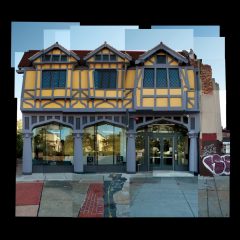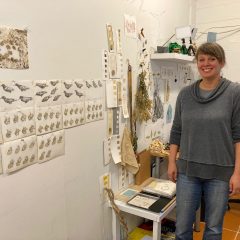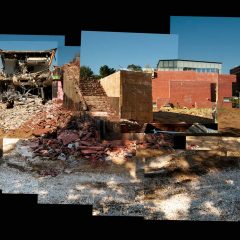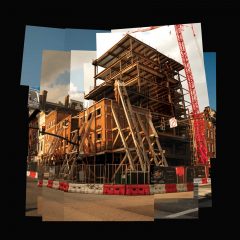Henry Francis du Pont (1880-1969) became heir to the family fortune and the du Pont family home, Winterthur, in 1926. With a passion for early American decorative arts and crafts and deep pockets to collect, du Pont amassed rooms-full of furniture and entire collections of china, to say nothing of colonial-era eyeglasses, books, clothing, textiles, paintings and other memorabilia. So much did he collect that he dedicated the family home, Winterthur, to showcasing his collection, at first to family and friends, and later, after the family moved out, to the general public, in 1951, when Winterthur became a museum with an endowed educational and research Program in Early American Culture.
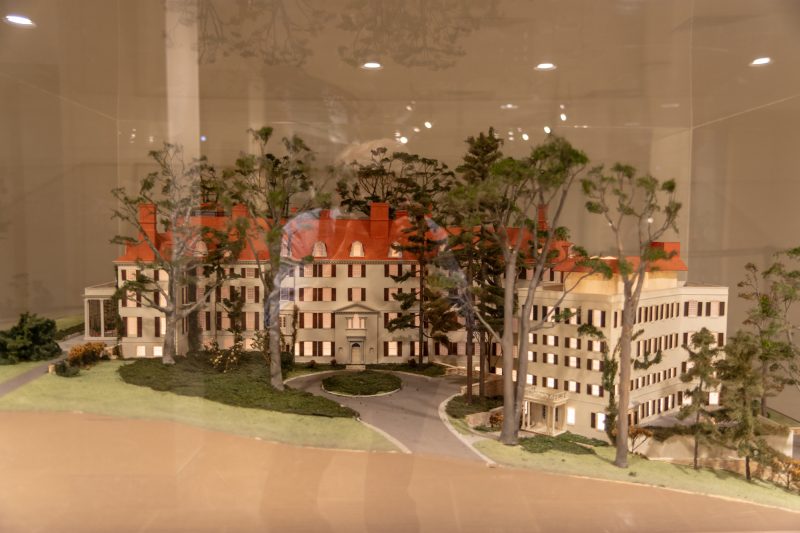
Ambitious, good at bargaining, and driven to find the best, H. F. du Pont bought architectural interiors and exteriors to complement his vast objects’ collection — wainscotting, crown molding, window trim, fireplaces, and in one amazing stroke of architectural refurbishing, a one-story circular staircase he transformed into a two story elliptical staircase that is a visual knockout, but so delicate and steep it is off limits, even to staff. (See pictures below)
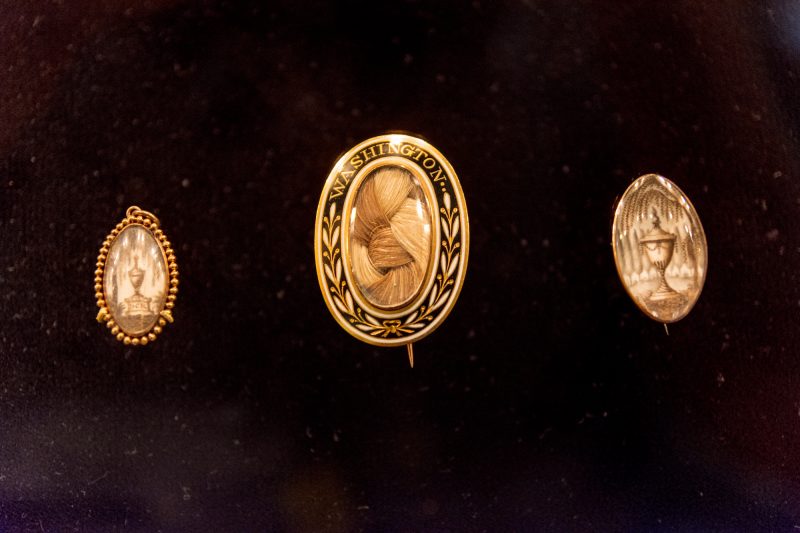
H. F. was a visionary. Early on he saw his collection as one to share with the world. Harvard educated in horticulture but self-taught in the areas of art and design, he possessed a great color sense and an artist’s sensitivity for space, balance and texture. As a collector, he collected what he liked and loved and what fulfilled his obsession with Colonial American life. Even though he was a 20th Century man, he lived at Winterthur surrounded by the ambiance of the Colonial American life lived by the Founders. Our tour guide, Ms. Nickle, said he adored George Washington, and the collection is filled with Washingtonia, including a Victorian Mourning Brooch with the braided hair of George and Martha, which the museum had authenticated by DNA analysis, and a cast iron Washington statue that was created as a heating element. The Winterthur catalog lists it as a stove!
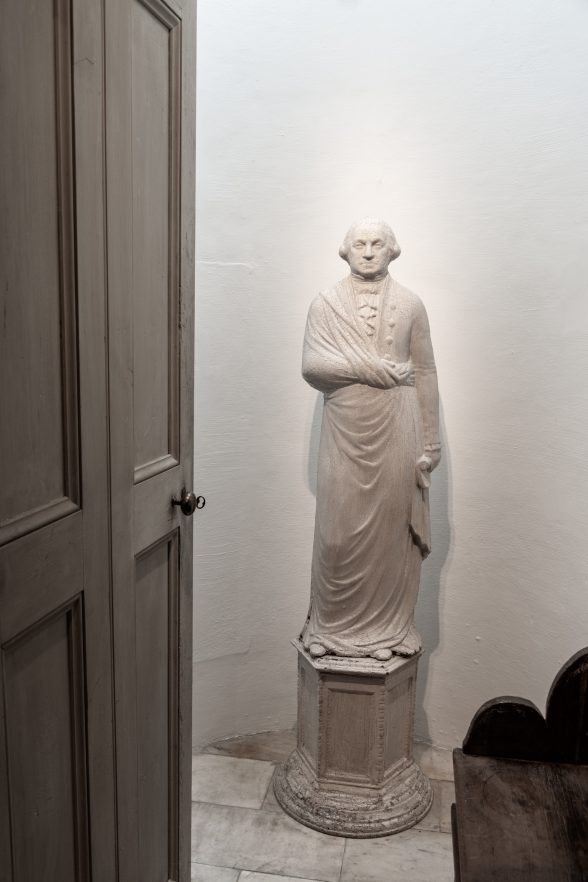
Du Pont didn’t accomplish overnight the Winterthur we know today. Nor did he manage the additions, subtractions and tweaks on his own. He had a trusted mentor and friend, architect Thomas Waterman, and together they designed, planned, added to, and carved up the spaces in the family mansion and created more than 175 period rooms. The project began in 1929 and, even past H. F.’s death in 1969, the work is still ongoing (including additions of an Empire Bedroom and a Georgia Dining Room), supported by the family fortune and the museum.
Born at Winterthur H. F. was asked by his father to take management of the grounds and then the entire estate in 1914, when he was 34. He married Ruth Wales in 1916 and they had two daughters, Ruth Ellen and Pauline Louise. The family lived in the house from 1929 – 1950, while it was under constant construction of the 175 period rooms. Ruth du Pont played music and they were a good couple, said Nickle, adding, “She let him do his thing.” (Presumably he let her do her thing, too). Ms. Nickle said H. F. took his daughters on a round the world tour.
Touring Winterthur
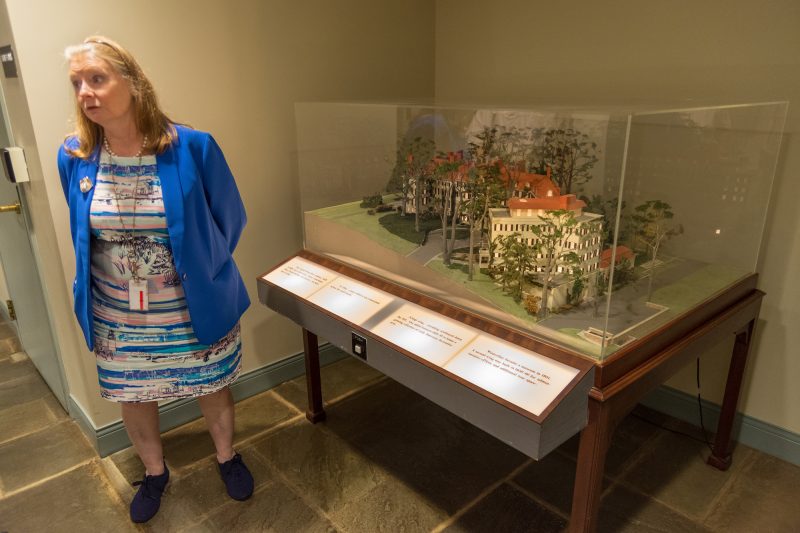
There’s no wandering around the house these days. Tours are required. The website has a menu of tours available, some tailored to families with children, others for adults only. Our tour’s theme was the collecting of the objects, with details about how purchases were made and anecdotes about dealers, agents, and competition by other collectors. It was a great tour.
As we trekked our way through the massive building, led by Senior Guide Specialist, Anne Nickle, we learned more facts, figures and errata than could humanly be absorbed or hastily scribbled in a notebook (indecipherable later). Here are some of the anecdotes that caught my attention and that my notes elucidate to greater or lesser degree. I hope they give the flavor of the house and the collection. I’m indebted to Chuck Patch for his great photos, taken under very low light, which Winterthur uses to protect the delicate antiques on display.
Spatterware
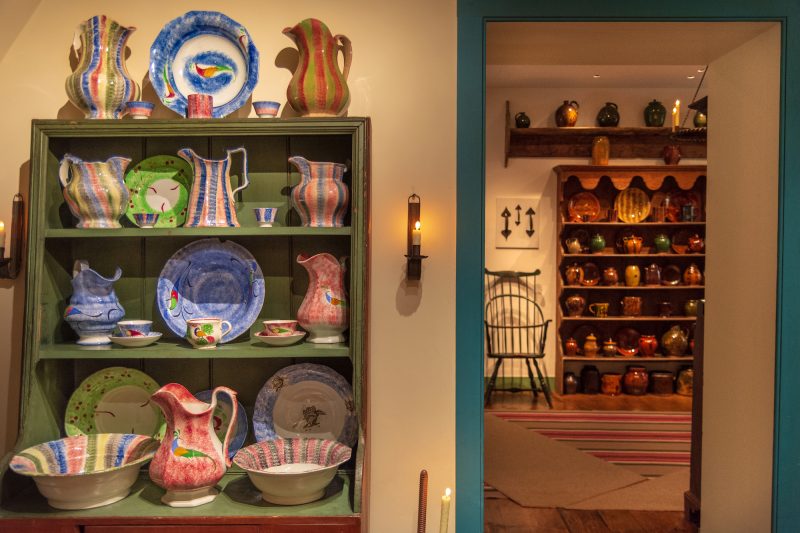
Winterthur includes a room-spanning, mind-boggling collection of spatterware, which Nickle told us was middle class English dishware, apparently spurned in its home country so sent to America, where the Pennsylvania German population loved it. Colorful, cheap, H. F. loved it, too! And he collected deeply. The dishes have a painted element in the center (bird, flower).
Montmorenci Staircase
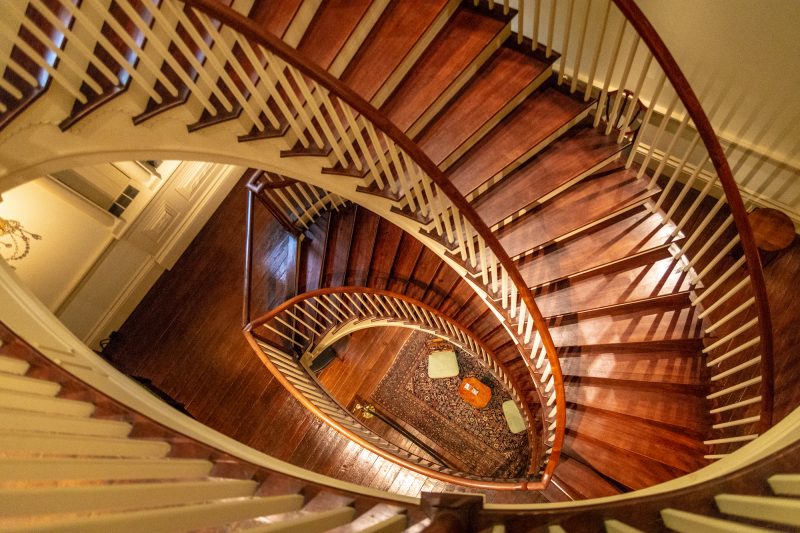
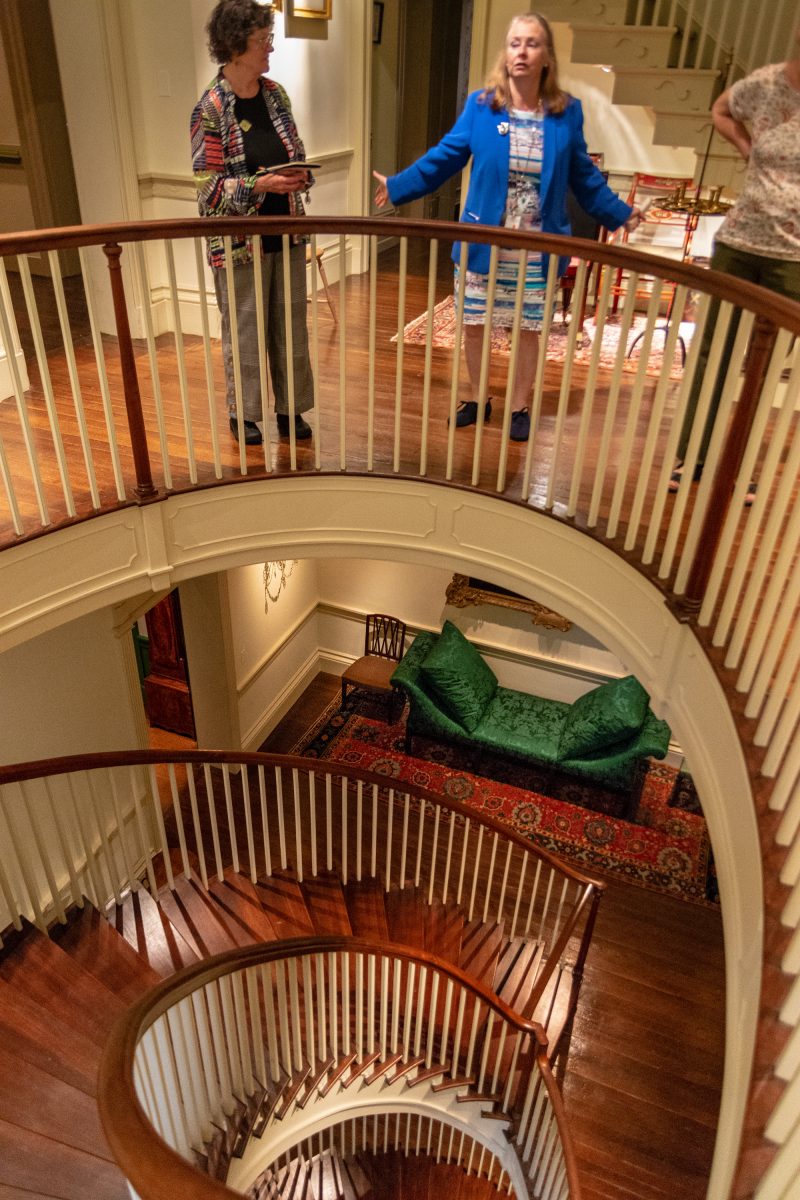
The North Carolina plantation house, Montmorenci, included a round staircase that du Pont bought to replace the existing marble staircase in the entryway of the original part of Winterthur. There’s a crystal chandelier over the stairs and H. F., an opera lover, put speakers into it to pipe in music. In the atrium atop the elliptical stair I noticed paintings of waterfalls, many, many waterfalls, and thought the plunging water pictures complemented perfectly the steep cascading stairs. (NOTE: There appears to be a Montmorency Falls in Canada, at the mouth of the Montmorency River!)
Argand Lamp
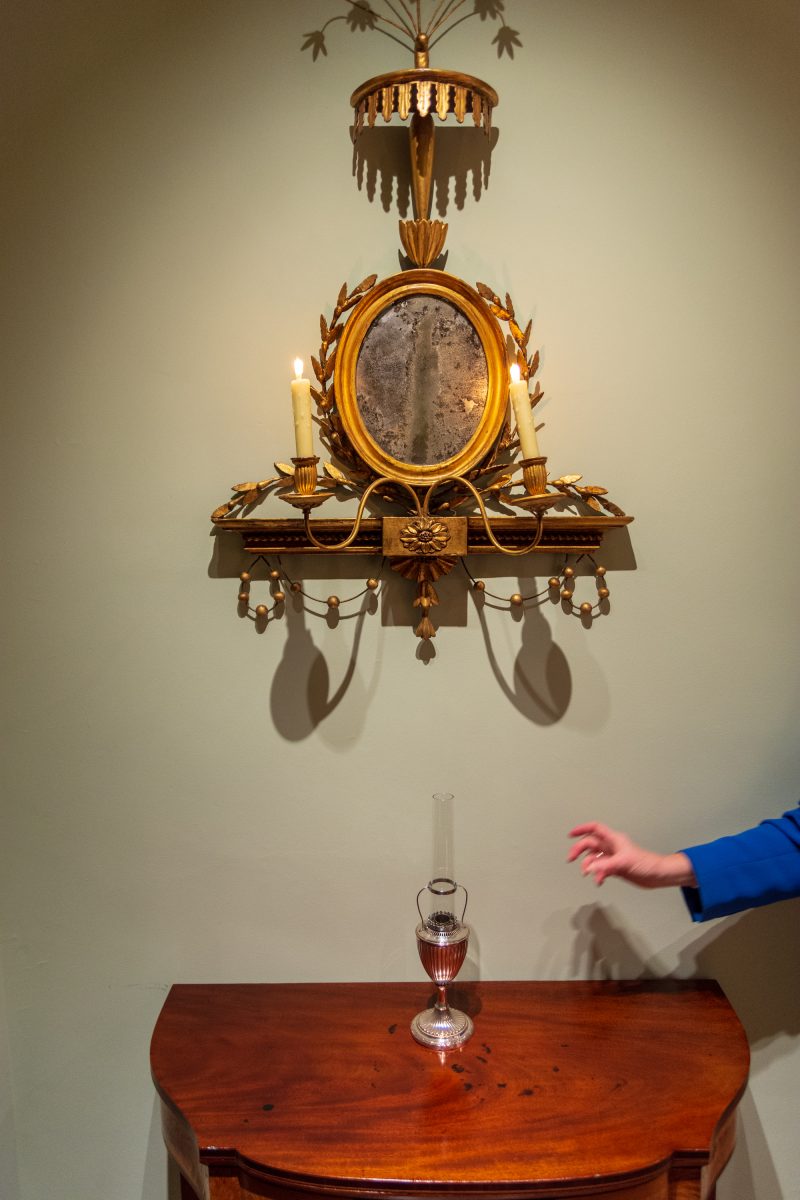
The Argand lamp gives 60 watts of light (very bright compared to a candle’s 6 watts). My notes are very sketchy and the tale is complex, but the story starts with Thomas Jefferson buying some of these lamps in Paris, then seeing a better one in London and (maybe) buying that too….The lamps pass from hand to hand and turn up in America, where the Jefferson argon lamp is written about by an antiquarian, Mr. Watson. Mrs. Gillman buys it. She dies in the 1940s and the lamp is up for auction. Fiske Kimball, head of the Philadelphia Museum of Art and charged with renovating Monticello, Jefferson’s home, wants it. H. F. du Pont sits on the Board of the PMA. He wants it too. Somehow (extreme note failure) the Jefferson argon lamp is at Winterthur and some imposter lamp resides at Monticello.
Ruth Ellen’s room
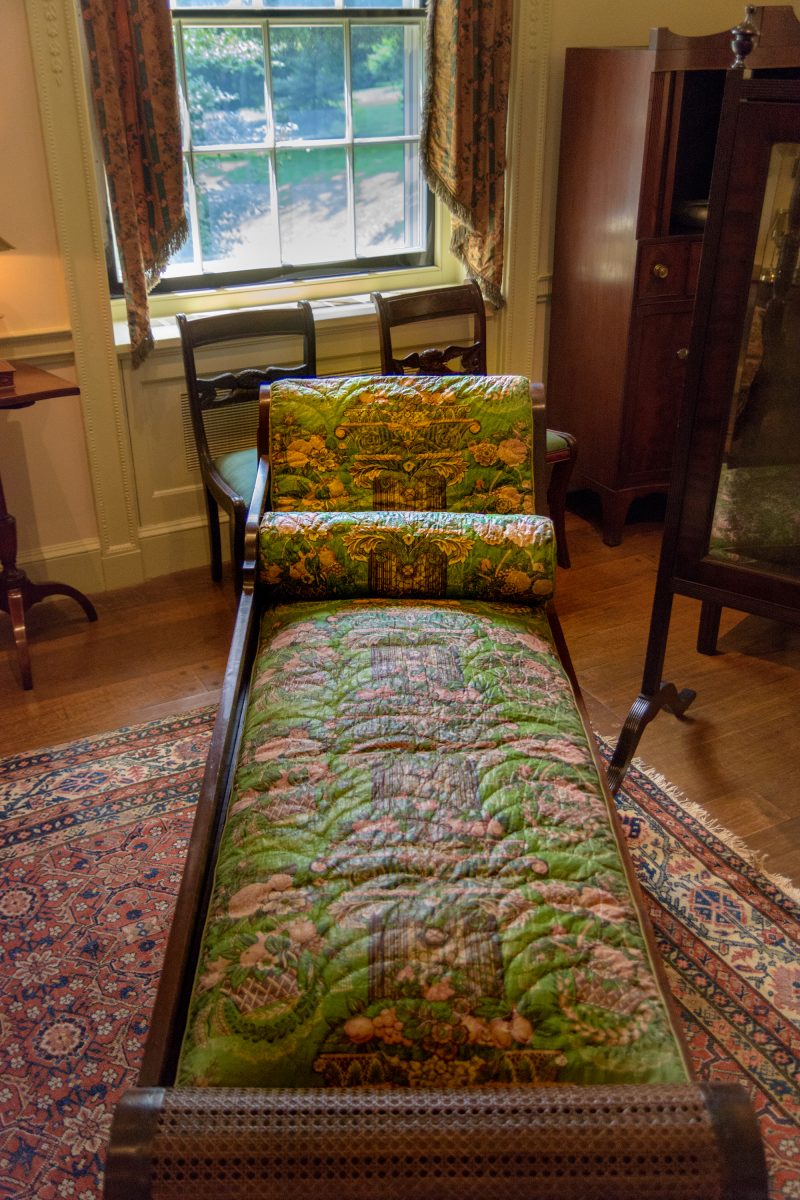
H. F. used to cut up period quilts and ladies’ dress fabrics and used them to re-upholster period furniture. Shocking! But apparently others did this too.
Boston Tea Table
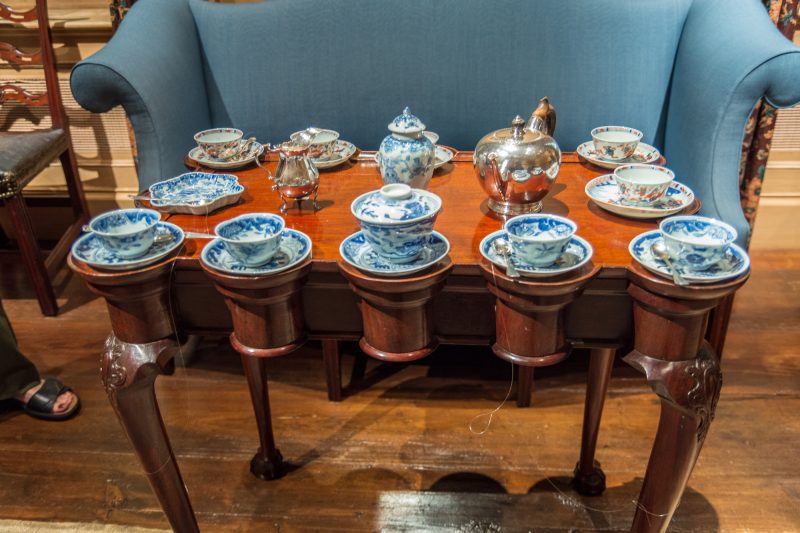
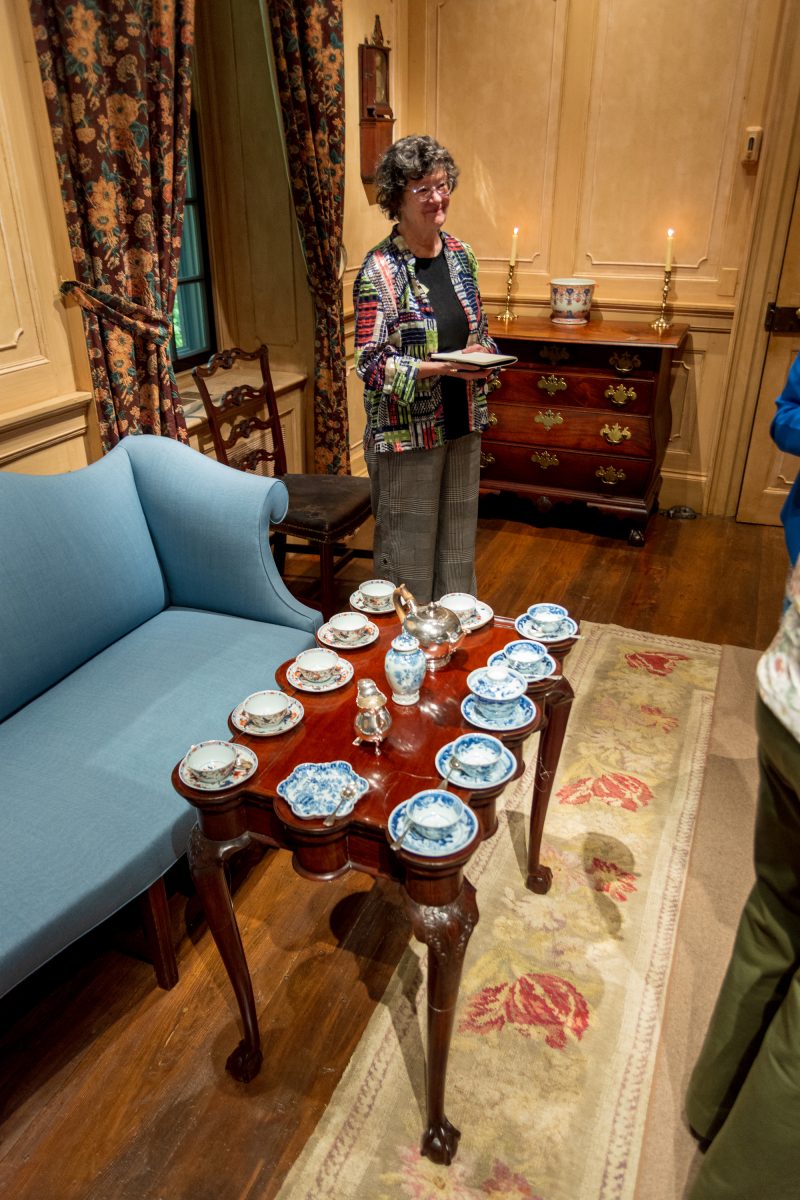
A rare form of a tea table owned by an old Boston family came on the market. The dealer wanted $20,000. H. F. passed on it. A few years later it came up again and H. F. bought it for $7,000.
Semi-circular setee
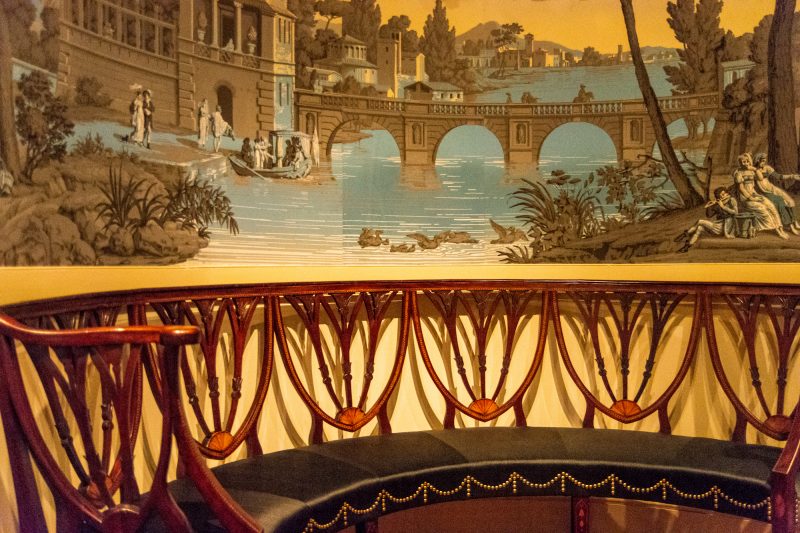
H. F. visits a Boston house and finds a 1799-era semicircular settee that had sat under a circular staircase and been in the house for 200 years. He doesn’t have a place for it but he wants it. He offers $7,000. The owner waffles. Ultimately, du Pont got it for less. Then he built a semicircular hall to accommodate the new setee.
Chinese export porcelain
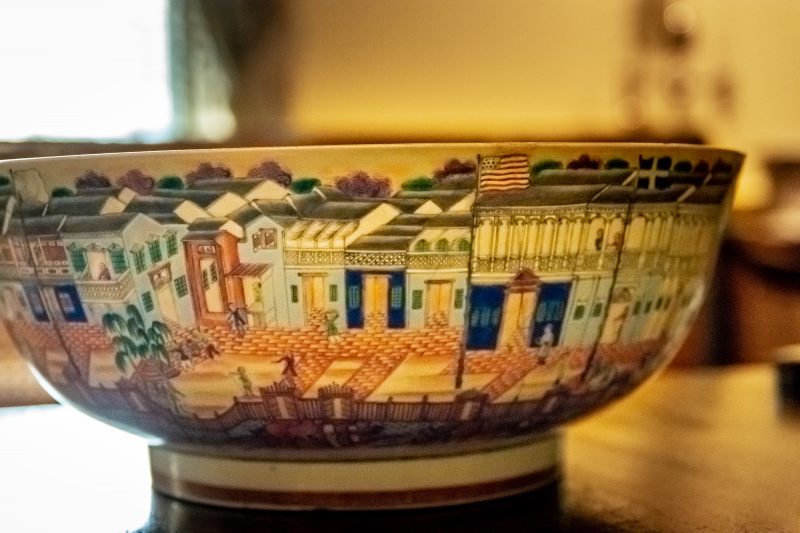
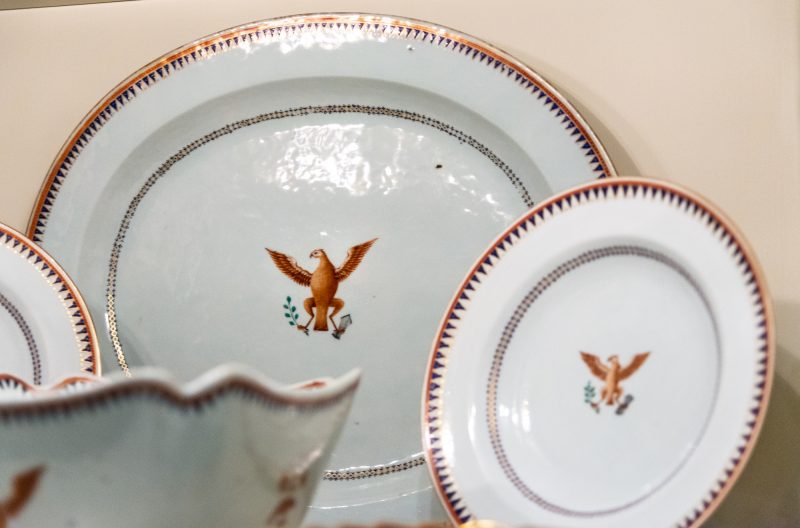
Before 1710, only the Chinese used paste porcelain, with no lead. It was very valued for tableware for obvious reasons. The Chinese made tableware with eagles painted on especially for the American market. The eagle, which looks more like a chicken, holds an olive branch with 13 berries and 13 spears (13 colonies). In another purchase, H. F. ‘s dealer found a Chinese export punch bowl with an American flag painted on. (The Chinese painted scenes from daily life on the punchbowls, with flags from other countries to sell to customers in those other countries).
Federal desk from Africa
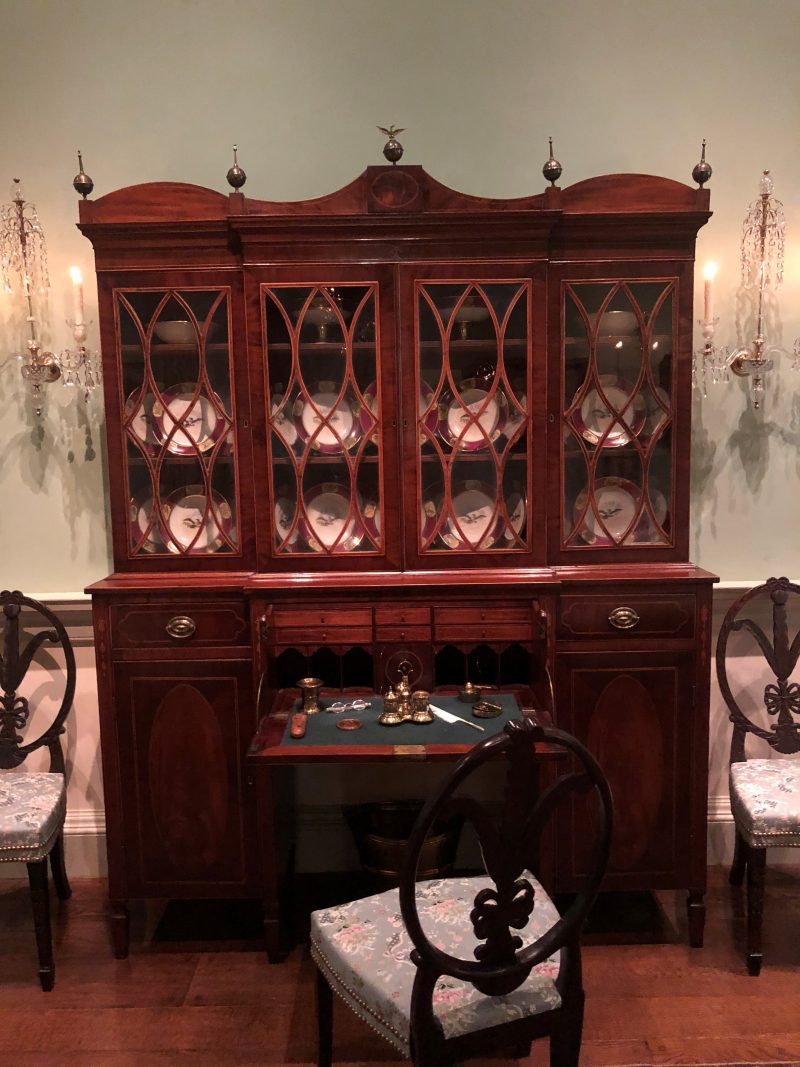
H. F. found a desk from the Federal era that had been in South Africa. The desk was “venture cargo,” and that’s how it wound up in South Africa. Du Pont liked the piece. So did Fiske Kimball, so H. F. bought it quick…but he loaned it to Fiske Kimball. (NOTE: Below is the correct and full story sent me by Winterthur)…
A ship traveling anywhere means that there is the potential to sell goods at its destination, so a number of New England furniture makers consigned furniture to ships sailing to all sorts of destinations; that is what defines it as “venture cargo.” This one (desk) made it all the way to Africa in the 1790s. By 1929 it was owned by someone living in Capetown, South Africa. It was published in a magazine, where antiques dealer J.A. Lloyd Hyde spotted it and pursued it on behalf of H.F. du Pont. Fiske Kimball of the Philadelphia Museum of Art was pursuing it simultaneously, but Hyde beat him to the close.
Outtakes
- There was a fad for period rooms starting around the time of the Centennial in Philadelphia in 1876.
- Antiques magazine started in 1922. Dealers were learning the trade and dealing as they went along.
- H. F. loved eagles. The house is “Eagle central,” said Ms. Nickle. Not only on the china but in carved wood, Eagles, the American national symbol, appear all over the house.
- There was an indoor badminton court in the house, which H. F. turned into a period town square.
- Initially, when H. F. entertained friends and family in the house, they slept in the period rooms and ate from the antique plates.
- Read the first chapter of H. F.’s daughter Ruth du Pont Lord’s memoir about her father.
Final thoughts
It’s not fair or reasonable to pass judgement on a Victorian collector who did a great thing for American decorative arts by turning his home into a museum and creating important research, educational and conservation programs. But touring the mansion made us wonder, is it enough in 2018 to collect art? And, what is a wealthy person’s duty to the common people of their era?
Winterthur, 5105 Kennett Pike (Route 52), Winterthur, DE 19735 Tickets required for entry to the house. Reserve here.


